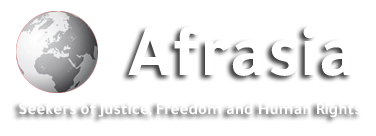
Afrasianet - Oraib Al-Rantawi - Netanyahu hoped to restore his personal image, gather the ranks of his ruling coalition, and achieve victory over a stubborn opposition, and his activity against them in the street.
Driven by need and desire, Benjamin Netanyahu went to a battle he thought was a "little walk" with Gaza.
A need to restore his ruling coalition after the outbreak of manifestations of rebellion led against him by those to his right in the government, and an unbridled desire to restore his deteriorating standing among Israeli public opinion, and to restore the eroded image of his "deterrent" entity on the other side of the conflict with the Palestinian and Lebanese resistances.
Here, it should be noted that the word "restoration" is the most accurate and common (even among Israelis) in interpreting Netanyahu's personal and political motives, which led him to rush the confrontation. However, Netanyahu would not let his inclinations and impulses control his decision to go to a "war" with Gaza.
The man and his miniature security and political staff based their decision on a number of bets, the most important of which are:
(1) The targeting of three of the most prominent Islamic Jihad field commanders will confuse the movement, paralyze its ability to respond, and leave an indelible mark on its ability to respond soon.
(2) The response will not go beyond the settlements surrounding Gaza in place, and will take a day or two in time.
(3) The "jihad" will be left alone, as in the previous two times.
(4) The element of surprise and the expected limited response of "jihad" will not allow the arenas to unite.
(5) The strategy of "cauterizing awareness" and the "battle between two wars" will do its job, and its effects will affect all factions and arenas. This is what Netanyahu and his security and political "kitchen" thought.
In order to translate these bets and pave the way for them, Netanyahu resorted to adopting tactics that he thought would help him achieve what he set out to do, and for his sake.
The first is the repeated assertion that it targets "jihad" only, and does not intend to harm Hamas and the Qassam Brigades. Second, activating mediators and communication channels to confirm that he does not want a broad confrontation on multiple fronts (UNIFIL with Lebanon, and Cairo with Gaza).
The third is the persistence in demonizing the "Jihad" and exaggerating its ties to Tehran and the southern suburbs, in order to claim that it is fighting Iran and Hezbollah and their "tools" in Gaza, and not the Palestinians. Fourth, avoiding the "Dahieh strategy" in dealing with Gaza this time, and avoiding striking its towers and causing human losses, after which Hamas and its allies will not be able to continue with "restraint." Netanyahu's field and threshing floor After 5 days of fierce fighting, how did the “shield and arrow” harvest come about, and did the accounts of “Netanyahu’s field” coincide with those of Baidar? "Restoration" of his position, his coalition and the image of his deterrent entity? Netanyahu fired the "first arrow" in this battle, but it was the "Jihad" movement that fired the last missile in it, despite the martyrdom of 6 of its senior leaders, not just 3.
in Palestinian performance In "Revenge of the Free", "Jihad" surpassed itself, in the field as well as in politics. It succeeded in absorbing the first shock, and succeeded in "filling a void" of 6 of its main leaders who were targeted by the enemy in 5 days.
This is an issue that the "Jihad" must study and review, as it seemed that the intelligence information in the possession of "Israel" could Its consequences will be dire, if sufficient protection, safety and security measures are not taken, but the organization's vitality and struggle enabled it to quickly regain the initiative and control the course of the military operation, until the last minute, and shortly thereafter. Politically, Al-Jihad negotiated with force and firmness as well.
It rejected the first offers of truce, and it was an Arab translation of what Netanyahu wanted, and eventually reached understandings somewhat similar to the April 1996 understandings between Hezbollah and “Israel”: neutralizing civilians and their homes, and stopping targeting individuals (read leaders).
As for the failure to extract "Israel's" acceptance of the release of the body of the martyr Khader Adnan, it was a "defect" dictated by the calculations of the moment and the comparison of profit and loss, in light of the knowledge of the Palestinian negotiator and the Egyptian mediator of the implications and heavy consequences of such a matter on the other side of the conflict equation:
Netanyahu and his coalition. Hamas's performance was the most controversial and questionable in Palestinian and Israeli circles alike.
The larger movement, which holds the reins of the de facto authority in the Gaza Strip, contented itself with providing political cover for "Jihad" through the joint operations room. The Israelis need to work to shorten the duration of the battle and accept the calm, but rather hasten it before it slips into the scenario of a big explosion, which the Netanyahu government fears and does not want.
The Hamas leaders' congratulations to the "Jihad" after the battle, and their appreciation for its leading role in its activities, and for bearing its greatest burden, confirm the modest field limits of Hamas' participation in the fighting. Some attributed the matter to what could be described as "role-sharing", and some included it as a "competition" between two main factions in the resistance, and others attributed it to the calculations of Hamas, as the authority in charge of the Strip and the necessities dictated by that, which are not limited to the borders of the Strip.
Rather, it is linked to the wider Hamas project in the Palestinian arena and its regional calculations. As for us, we attribute the position of Hamas and its position in this battle to the aforementioned reasons together, especially since the movement's recent position cannot be read in isolation from its positions in two previous confrontations, which were also led by Islamic Jihad.
The Palestinian Authority, in turn, remained silent in its absence and coma, contenting itself with the minimum level of diplomatic activity usual in such cases, and the traditional addresses of the United Nations, the League and some capitals.
Its president did not find anything wrong with leaving Ramallah at the height of the Gaza battles, and then going to the United Nations to ask for protection, in a form closer to groveling and begging.
The unity of the Palestinian arenas (Jerusalem, the West Bank, the 1948 territories and the diaspora) has only been achieved in a limited and partial way, as expressed by some popular movements in Palestine, neighboring countries and European capitals.
This is due to two factors, from the point of view of the author of these lines:
The first is that the battle did not reach a sufficient extent in terms of time, place, and intensity of fighting, as in “Saif al-Quds,” for example.
The second is the "zero equation" that governs the two sides of the division, and it is like a black hole, capable of swallowing up most or all of the gains of confrontation, steadfastness and valor in the fields and open arenas of confrontation. The "Unity of Squares" is a Palestinian approach with strategic significance, as indicated by the Israeli concern about this approach.
It embodies the unity of the people, the cause, and the struggle, but its manifestations do not occur immediately and automatically, as reactions to an action here or a development there, but rather it is a path and a process, and one notices the divergence of circumstances, contexts, and conditions.
Which the Palestinians find themselves in between, and aims to create synchronization and parallelism in the longer term, between the struggles of the Palestinians in their various places of expansion.
"Revenge of the Free" is one of the days of Palestine, and a station of struggle that contains many political and military lessons and lessons, which must be read carefully, not by the "Islamic Jihad" alone, but by the various Palestinian parties and arenas of Arab resistance action.

